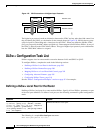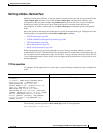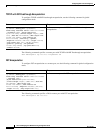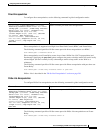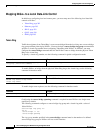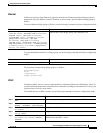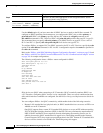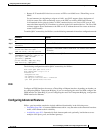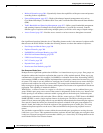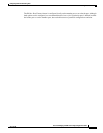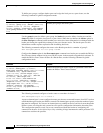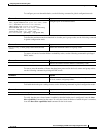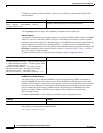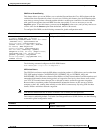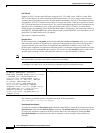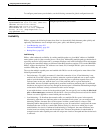
Configuring Data-Link Switching Plus
DLSw+ Configuration Task List
BC-296
Cisco IOS Bridging and IBM Networking Configuration Guide
78-11737-02
• Modes of Operation, page 306⎯Dynamically detects the capabilities of the peer router and operates
according to those capabilities.
• Network Management, page 307—Works with enhanced network management tools such as
CiscoWorks Blue Maps, CiscoWorks SNA View, and CiscoWorks Blue Internetwork Status Monitor
(ISM).
• Traffic Bandwidth and Queueing Management, page 307—Offers several bandwidth management
and queueing features to enhance the overall performance of your DLSw+ network. Controls
different types of explorer traffic using multiple queues, each with a wide range of depth settings.
• Access Control, page 307—Provides access control to various resources throughout a network.
Scalability
One significant factor that limits the size of Token Ring internet works is the amount of explorer traffic
that traverses the WAN. DLSw+ includes the following features to reduce the number of explorers:
• Peer Groups and Border Peers, page 296
• Explorer Firewalls, page 300
• NetBIOS Dial-on-Demand Routing, page 300
• SNA Dial-on-Demand Routing, page 301
• UDP Unicast Feature, page 301
• LLC1 Circuits, page 302
• Dynamic Peers, page 302
• Promiscuous Peer Defaults, page 302
Peer Groups and Border Peers
Perhaps the most significant optimization in DLSw+ is a feature known as peer groups. Peer groups are
designed to address the broadcast replication that occurs in a fully meshed network. When any-to-any
communication is required (for example, for NetBIOS or Advanced Peer-to-Peer Networking [APPN]
environments), RSRB or standard DLSw implementations require peer connections between every pair
of routers. This setup is not only difficult to configure, but it results in branch access routers having to
replicate search requests for each peer connection. This setup wastes bandwidth and router cycles. A
better concept is to group routers into clusters and designate a focal router to be responsible for broadcast
replication. This capability is included in DLSw+.
With DLSw+, a cluster of routers in a region or a division of a company can be combined into a peer
group. Within a peer group, one or more of the routers is designated to be the border peer. Instead of all
routers peering to one another, each router within a group peers to the border peer; and border peers
establish peer connections with each other. When a DLSw+ router receives a TEST frame or NetBIOS
NAME-QUERY, it sends a single explorer frame to its border peer. The DLSw+ border peer router
checks its local, remote and group cache for any reachability information before forwarding the explorer.
If no match is found, the border peer forwards the explorer on behalf of the peer group member. If a
match is found, the border peer sends the explorer to the appropriate peer or border peer. This setup
eliminates duplicate explorers on the access links and minimizes the processing required in access
routers.
You can further segment DLSw+ routers within the same border peer group that are serving the same
LANs into a peer cluster. This segmentation reduces explorers because the border peer recognizes that
it only has to forward an explorer to one member within a peer cluster. Only TCP encapsulation can be
used with the DLSw+ Peer Clusters feature.



